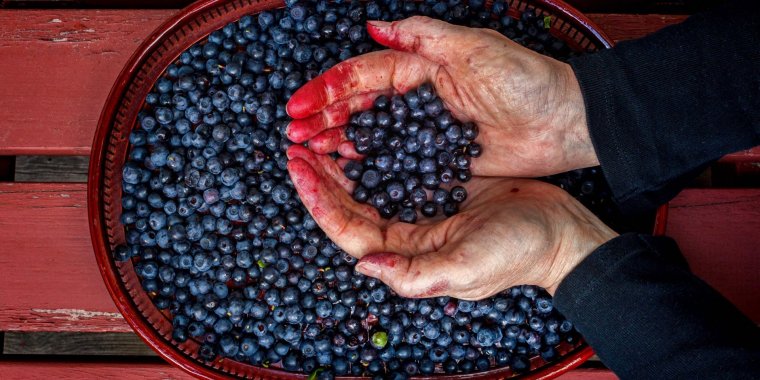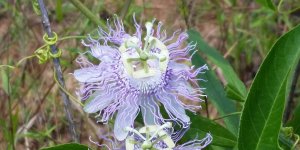| Health / Plants and plant products |
Bilberry
The bilberry bush is native to northern areas of Europe and Asia, the northern United States, and Canada. Its dark berries resemble blueberries.

Bilberries have dark red juice that stains hands. Photo: W.carter/Wikipedia
Its name is derived from the Danish word bollebar, which means “dark berry.” Common Names: bilberry, European blueberry, whortleberry, huckleberry. Latin Names: Vaccinium myrtillus
The fruits will stain hands, teeth and tongue deep blue or purple while eating and so it was traditionally used as a dye for food and clothes in Britain.
Vaccinium myrtillus has been used for centuries in traditional medicine, particularly in traditional Austrian medicine as a tea or liqueur in attempts to treat various disorders.
The berries and leaves are the parts of the plant that are used. Historically, bilberry has been used for a variety of conditions, including diarrhea, inflammation of the mouth, urinary problems, and diabetes. It’s also been used traditionally to prevent scurvy, due to its high vitamin C content. During World War II, British pilots ate bilberry jam, thinking it would improve their night vision.
Today, bilberry is promoted as a dietary supplement for night vision, cataracts, varicose veins, and other conditions such as atherosclerosis (in which plaque builds up in arteries).
In cooking, the bilberry fruit is commonly used for pies, tarts and flans, cakes, jams, muffins, cookies, sauces, syrups, juices, and candies.
Bilberry and the related V. uliginosum both produce lignins, in part because they are used as defensive chemicals. Although many plants change their lignin production – usually to increase it – to handle the stresses of climate change, lignin levels of both Vaccinium species appear to be unaffected.
V. myrtillus contains a high concentration of triterpenes which remain under laboratory research for their possible biological effects.
How Much Do We Know?
There are few high-quality clinical trials (studies in people) of bilberry supplements.
What Have We Learned?
There’s little scientific evidence to support the use of bilberry for many health conditions.
A few recent studies have suggested possible beneficial effects of bilberry. However, these studies involved small numbers of people. More research would be needed to confirm these findings.
Results from a small clinical study (24 people) suggest that consuming bilberries may reduce gum inflammation and bleeding.
Data from a Japanese study with 88 office workers suggest that a bilberry extract helped with eye fatigue.
Data from a small study with 21 people suggest that consuming bilberry juice for 5 days before and 2 days after a half-marathon may lead to small to moderate transient increases in muscle soreness and inflammation in recreationally trained runners.
The berries have a high concentration of polyphenols called anthocyanins, which some studies suggest may have health benefits.
What Do We Know About Safety?
Bilberry fruit is considered safe when consumed in amounts typically found in foods, or as an extract for 6 months to a year.
Bilberry leaves may be unsafe when taken orally (by mouth) in high doses or for long periods of time.
Little is known about whether it’s safe to use bilberry during pregnancy or while breastfeeding. (Consuming amounts typically found in foods is considered safe.)
Bilberry may interact with a cancer drug called erlotinib (Tarceval), antidiabetes drugs, or medications that slow blood clotting. If you’re taking medicine, talk with your health care provider before taking bilberry supplements. (National Institutes of Health/Wikipedia)
YOU MAY ALSO LIKE





